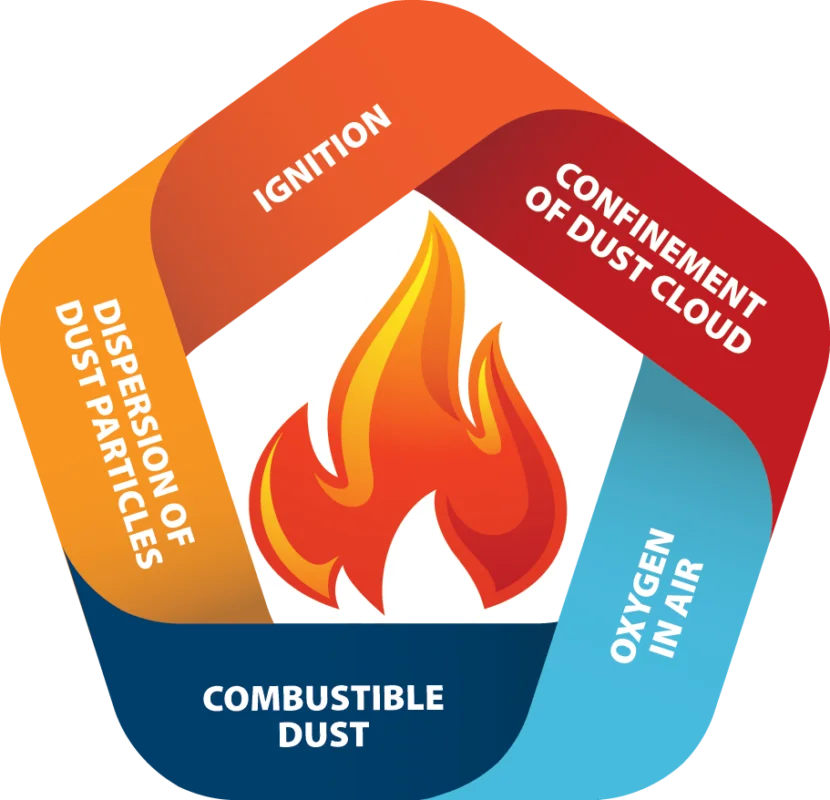What Is The Dust Pentagon?
The 5 Elements of a Dust Explosion
There are five required elements for a dust explosion. They are sometimes referred to as the Dust Explosion Pentagon:

- A fuel, which is the combustible dust
- An oxidant, which is typically the oxygen in the air
- An ignition source capable of igniting materials when they are dispersed as a cloud
- Dispersion, which is when the accumulated dust is spread out and creates a dust cloud
- Confinement, which leads to pressure rise and a potential vessel rupture, facility obstruction or structural collapse
Deflagration
A term often used in connection with dust fires and explosions is ‘deflagration’ and is defined as combustion which propagates through a gas or across the surface of an explosive at subsonic speeds, driven by the transfer of heat. The term is used for both flash fires and explosions. With a dispersed dust cloud, deflagration can cause an unconfined flash fire or, when confined, an explosion that ruptures the containment vessel.
The Two Explosions
Combustible dust explosions often involve two explosions: primary and secondary. The primary explosion is the first to occur when dust suspension in a confined space is ignited and explodes. The first explosion will dislodge other dust that has accumulated which, when airborne, also ignites. A secondary dust explosion is often more destructive than the primary one.
CONTACT US FOR MORE QUESTIONS
Get answers from an expert now.




